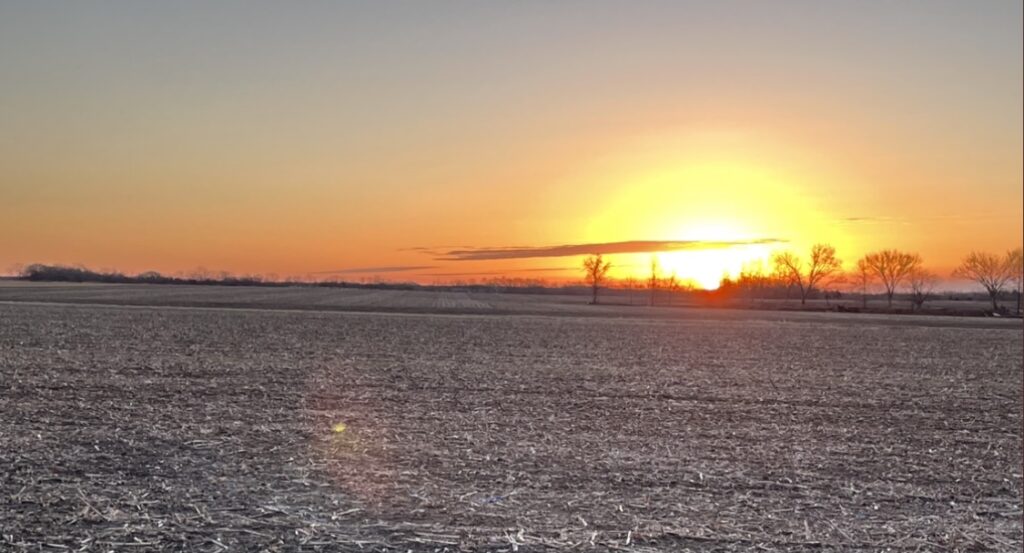
The bitterest days were past. A new front settled: warming the world and melting the snow and heavy ice of weeks before. Every dawn, the sun inched northward in its horizon breaking; and, every day, he waited and held witness to its rise.
The ground would thaw, the wheat root stronger—tillering and giving fast rise to green blades as the rest of the world waited in browns. It was all a cycle, inevitable, and—soon—the other fields would be ready for work, their open soil planted and made fertile again for another year of labor, toil, and reward.
There would come a day, in the peak of summer—when the world was all light and sun—and it seemed daylight would never end, that, with little notice, all would change. The next dawn would not be north, but southward in its shift, and in the green and light of summer’s peak: winter set its course.
When your life tied to the earth, you knew and waited for the change. and in the longest days of summer, you mowed, raked, and baled for what would sustain animals through the cold and winter to come; and in the bitterest of winter’s stretch, you dreamed and planned for when the sun’s light would restore, again, green and life to the world.
There was a reason pagan holidays centered on the solstice. They were religions of the Sun: the eternal and burning symbol of Life.
To those that still lived from the earth—through all the millennia of man—that never really changed. Sun remains the symbol around which life centers.
In his own way, he quiet-worshipped every dawn and held witness to its revelations made manifest as Light in the World. Life was waiting, and in forty days: the world would be green again.